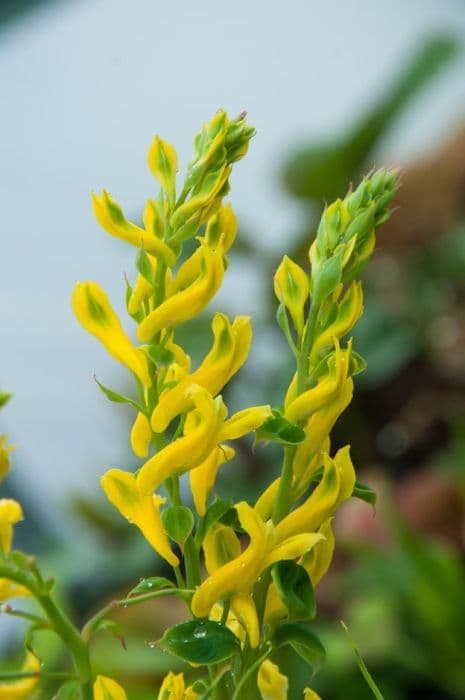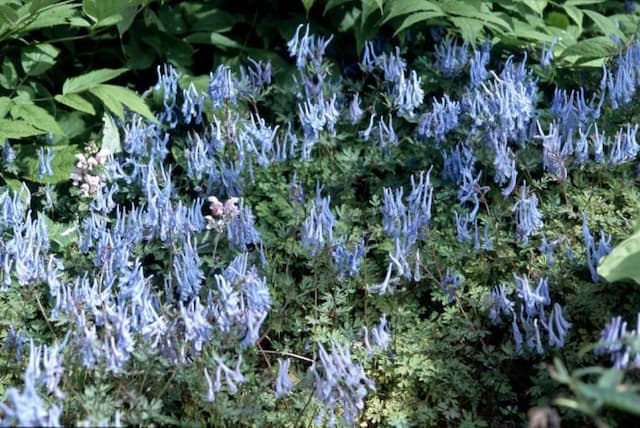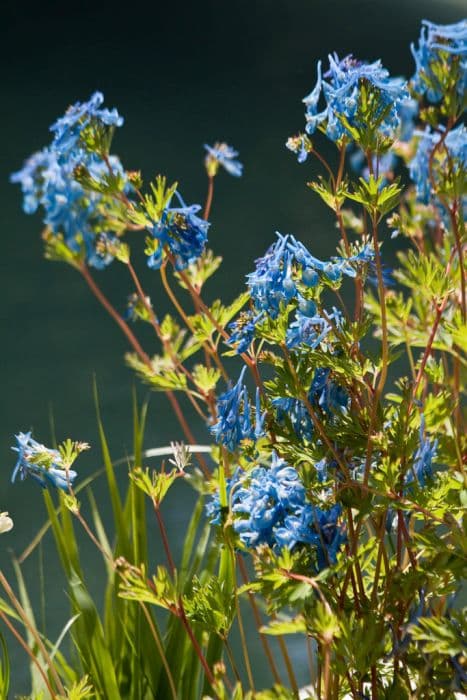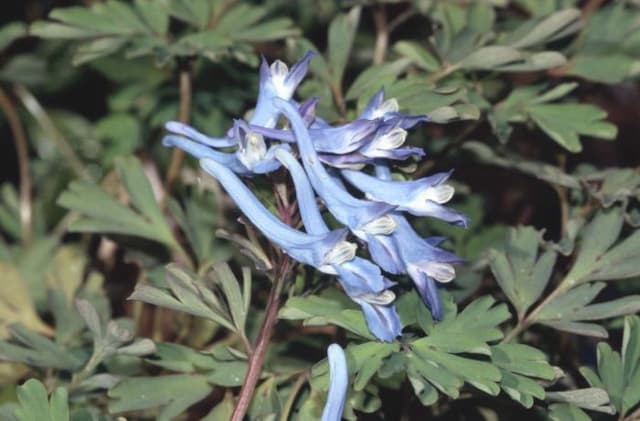Oriental Poppy Papaver (Oriental Group) 'Türkenlouis'

ABOUT
The 'Türkenlouis' is a strikingly vibrant plant that belongs to the Oriental poppy group. It is known for its large, flamboyant flowers that can catch the eye from a distance. The blooms are a fiery red color with a deeply fringed petal edge, giving them a ruffled appearance that adds to their dramatic presentation. At the center of each flower, there is a prominent black blotch that contrasts strikingly with the petals' bright hue. This dark center often contains a cluster of black stamens that surround a similarly dark ovary. The petals of the 'Türkenlouis' exhibit a crepe-like texture, adding a sense of depth and complexity to the flower. This textured look is complemented by the foliage, which is a grayish-green color and has a bristly or hairy texture that is rather typical of many poppies. The leaves are deeply lobed and can be described as having a somewhat feathery look, which provides an attractive background for the blooms. The 'Türkenlouis' tends to produce a single stem per flower, and this stem rises above the foliage. The overall impression of this plant is one of bold and exuberant beauty, with its vivid blooms creating a spectacular display during its flowering season. Despite the absence of specific size details, it is important to note that this variety, like others within the Oriental poppy group, generally has a presence that makes it a standout in any garden setting where color and drama are desired.
About this plant
 Names
NamesFamily
Papaveraceae
Synonyms
Oriental Poppy, Turkish Poppy, Perennial Poppy, Garden Poppy
Common names
Papaver orientale 'Turkenlouis'.
 Toxicity
ToxicityTo humans
The Oriental poppy is generally considered to have low toxicity to humans. However, all parts of the plant contain alkaloids which can potentially be toxic if ingested in large quantities. Eating parts of this plant can cause discomfort and symptoms such as dizziness, nausea, or lethargy. It is advisable to avoid ingesting any part of this plant.
To pets
Oriental poppy is considered mildly toxic to pets. Similar to its effects on humans, ingestion of the plant, especially in large amounts, can lead to symptoms such as vomiting, diarrhea, and sedation. While it is not typically deadly, ingestion can cause your pet discomfort and should therefore be avoided. If you suspect your pet has ingested any part of an Oriental poppy, it is best to consult with a veterinarian.
 Characteristics
CharacteristicsLife cycle
Perennials
Foliage type
Deciduous
Color of leaves
Green
Flower color
Red
Height
2-3 feet (60-90 cm)
Spread
1-2 feet (30-60 cm)
Plant type
Herb
Hardiness zones
3-7
Native area
Caucasus, Northeast Turkey
Benefits
 General Benefits
General Benefits- Attracts Pollinators: 'Türkenlouis' is known to attract bees and butterflies, which are vital for pollination in the garden.
- Visual Interest: With its brilliant red blooms featuring black markings, it adds striking color and visual appeal to any landscape.
- Landscape Versatility: It can be used in a variety of garden settings, including borders, rock gardens, and informal wildflower gardens.
- Drought Tolerant: Once established, it has low water requirements, making it suitable for xeriscaping and drought-prone areas.
- Deer Resistant: The plant's foliage and flowers are not preferred by deer, reducing the likelihood of damage and browsing.
- Low Maintenance: It requires minimal care once established, apart from occasional watering and deadheading to promote further blooming.
- Seasonal Interest: Blooms in late spring to early summer, providing seasonal interest at a time when many other plants are just beginning to grow.
- Cottage Garden Appeal: Fits well in a traditional cottage garden due to its informal growth habit and vibrant, showy flowers.
 Medical Properties
Medical PropertiesThis plant is not used for medical purposes.
 Air-purifying Qualities
Air-purifying QualitiesThis plant is not specifically known for air purifying qualities.
 Other Uses
Other Uses- As a dye plant: The vibrant petals of the Oriental poppy can be used to make a natural red dye for fabrics and artworks.
- Insect habitat: The large, open blooms of the Oriental poppy provide a landing pad and nectar source for pollinating insects such as bees and butterflies.
- As a photography subject: The striking appearance of 'Türkenlouis' makes it a popular choice for garden photographers and artists looking to capture its vivid colors and intricate details.
- Educational tool: Gardeners and educators may use the Oriental poppy to teach about plant life cycles, as it is a perennial that demonstrates distinct growth stages.
- Culinary decoration: Though not a common practice, the petals can be used to add color to salads or as a garnish, provided they have not been treated with pesticides.
- Morning greeting: Their tendency to open in the morning and close at night can be a natural indicator for the time of day in a garden setting.
- Companion planting: Oriental poppies can be planted with other perennials that will fill in the space when they die back after blooming, creating a succession of interest in the garden.
- Symbolism and memorials: The poppy is a symbol of remembrance and can be used in gardens or arrangements to honor the fallen or commemorate important dates.
- Crafting pressed flowers: The petals can be carefully pressed and dried to be used in crafting, for creating bookmarks, cards, or other decorative items.
- As a temporary ground cover: The broad leaf spread of Oriental poppies can provide temporary ground cover in the spring, suppressing weeds until other plants grow in.
Interesting Facts
 Feng Shui
Feng ShuiThe Oriental Poppy is not used in Feng Shui practice.
 Zodiac Sign Compitability
Zodiac Sign CompitabilityThe Oriental Poppy is not used in astrology practice.
 Plant Symbolism
Plant Symbolism- Sleep and Peace: Poppy flowers, including 'Türkenlouis', can symbolize sleep and peace due to their sedative properties and the link to Morpheus, the Greek god of dreams.
- Remembrance: Poppies are widely recognized as a symbol of remembrance, especially for soldiers who have died in wartime, as a result of the poem "In Flanders Fields" and their prominent growth in war-torn battlefields in Europe.
- Death and Resurrection: Due to their ability to bloom and grow in disturbed soils, such as battlefields, poppies can also represent death followed by resurrection and renewal.
- Beauty and Eternal Life: The 'Türkenlouis' poppy, with its vibrant and ornate blooms, can symbolize the pursuit of beauty and the concept of eternal life, underscoring the belief that the soul lives on after death.
- Consolation: Some cultures use poppy flowers as a token of consolation for loss and suffering, possibly related to their connection with sleep and easing pain.
 Water
WaterThe Oriental Poppy 'Türkenlouis' should be watered deeply once a week during its active growth, particularly in the absence of rainfall, ensuring the soil is not waterlogged. In periods of drought, increase watering frequency to maintain moist soil but allow the top inch of soil to dry out between waterings. Each watering session should provide enough water to soak the roots, approximately 1 gallon per plant, depending on the size and soil drainage.
 Light
LightThe Oriental Poppy 'Türkenlouis' thrives in full sun conditions with at least 6-8 hours of direct sunlight daily. It should be planted in a spot where it can receive unfiltered sunlight throughout the day to encourage strong growth and vibrant blooms.
 Temperature
TemperatureOriental Poppy 'Türkenlouis' performs best in temperature ranges between 50°F and 75°F but can tolerate temperatures as low as 20°F and as high as 90°F. The ideal conditions for this poppy include a cooler climate with nighttime temperatures lower than the daytime temperatures to promote healthy growth.
 Pruning
PruningPruning of Oriental Poppy 'Türkenlouis' involves deadheading spent flowers to encourage additional blooms and maintain plant appearance. Prune back foliage after it yellows and dies back, typically in late summer. This pruning regimen will promote plant health and prepare it for dormancy.
 Cleaning
CleaningAs needed
 Soil
SoilThe Oriental Poppy 'Türkenlouis' thrives best in a well-draining soil mix, with a good balance of sand, loamy soil, and compost to ensure adequate nutrition. A slightly acidic to neutral pH ranging from 6.5 to 7.0 is ideal for this plant. Make sure the soil is loose and not waterlogged to prevent root rot.
 Repotting
RepottingOriental Poppies 'Türkenlouis' have a deep taproot system and prefer not to be repotted frequently. It is often better to choose an appropriate location where they can grow undisturbed for several years. They do not respond well to being moved and can take some time to re-establish if repotting is necessary.
 Humidity & Misting
Humidity & MistingOriental Poppies 'Türkenlouis' are adaptable to a wide range of humidity levels and do not require high humidity. Average ambient humidity found in outdoor garden conditions is sufficient, and they do not necessitate any special humidity adjustments when growing in their preferred temperate environments.
 Suitable locations
Suitable locationsIndoor
Not suitable for indoor growing; needs full sun.
Outdoor
Plant in full sun, well-draining soil; water deeply.
Hardiness zone
3-9 USDA
 Life cycle
Life cycleThe Oriental Poppy 'Türkenlouis' begins its life cycle as a seed, which upon germination in spring, develops into a small seedling. The seedling grows rapidly, forming a rosette of leaves close to the ground. As the plant matures, it sends up a flower stalk and blooms with large, fiery red flowers that are fringed along the edges, typically in late spring to early summer. After flowering, the plant sets seed in distinctive seed pods, and as the pods dry out, the seeds are dispersed to start the next generation. The foliage often dies back during the heat of summer, with the plant entering a period of dormancy. In the fall, new foliage appears that will overwinter and continue the cycle the following spring.
 Propogation
PropogationPropogation time
Early Spring
The Oriental Poppy 'Türkenlouis' is typically propagated by seed, as this method is the most popular among gardeners due to its simplicity. To propagate 'Türkenlouis' poppies by seed, one should ideally sow the seeds in early spring directly into the ground where they are to flower, as poppies do not appreciate being transplanted due to their taproot system. Lightly press the seeds into the soil, as poppies need light to germinate, and keep the soil moist until germination, which usually occurs in 14-21 days. Once the seedlings have developed true leaves and are robust enough, thin them to stand 6 to 8 inches (approximately 15 to 20 centimeters) apart to allow adequate room for growth. This method capitalizes on the plant's natural life cycle to propagate a new generation of poppies.









